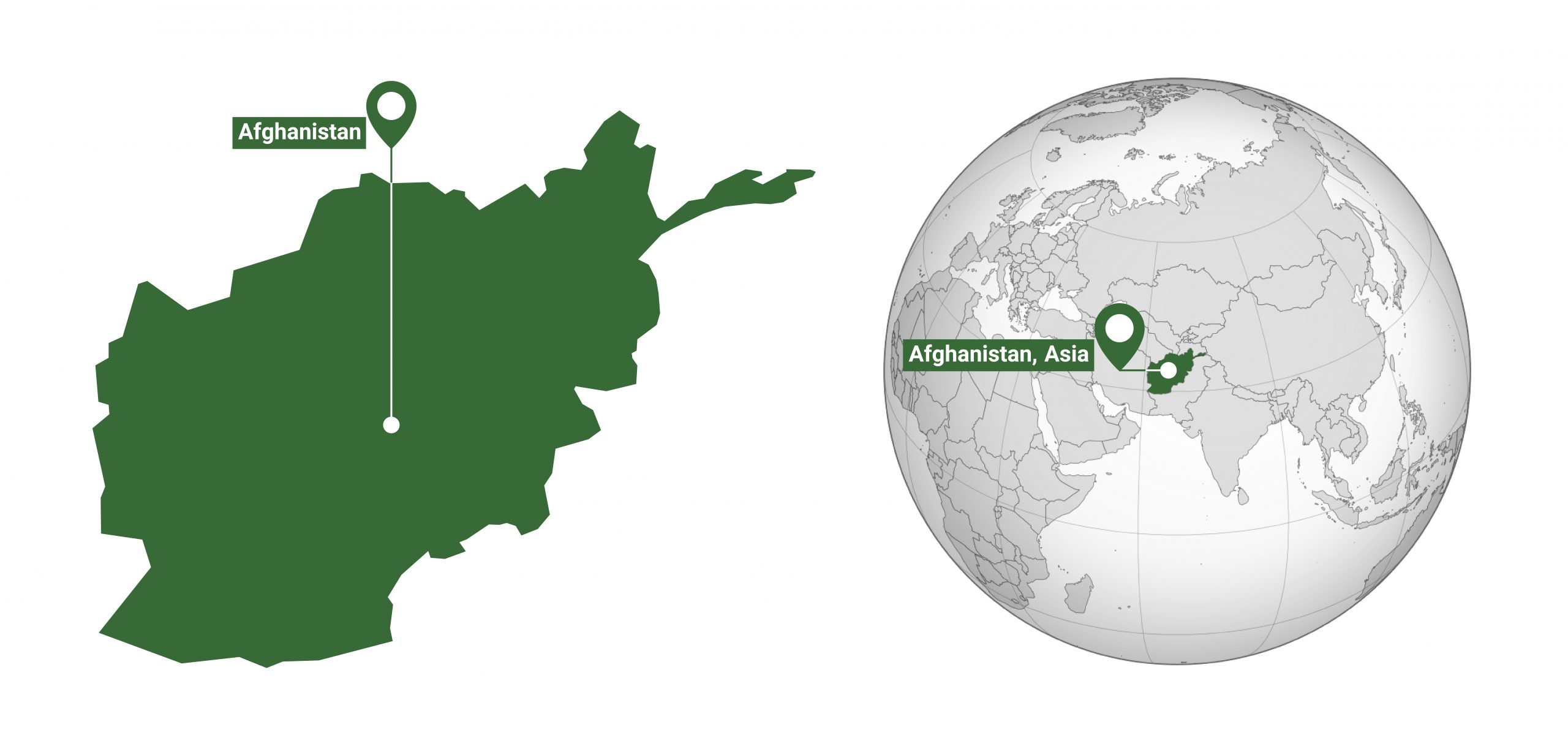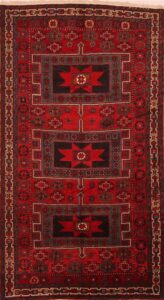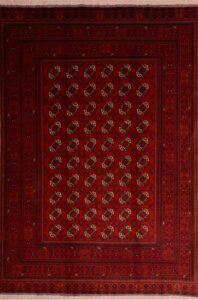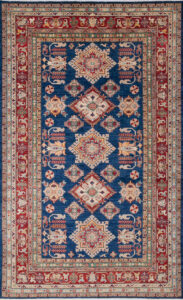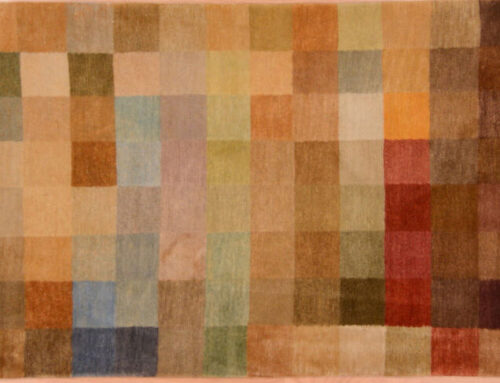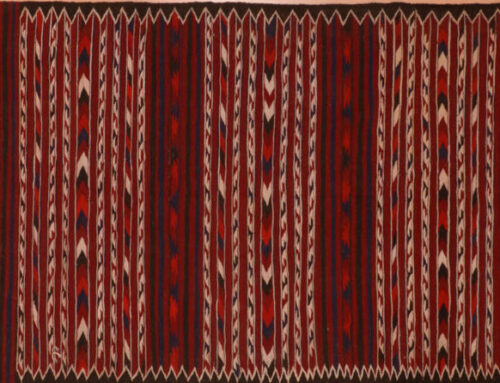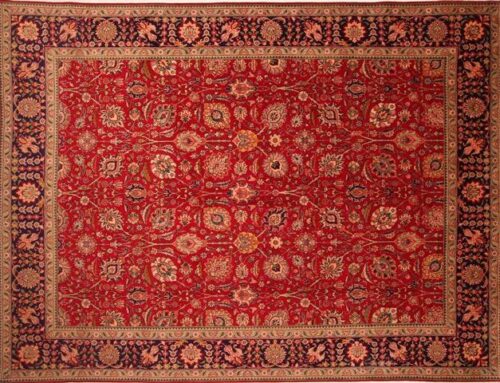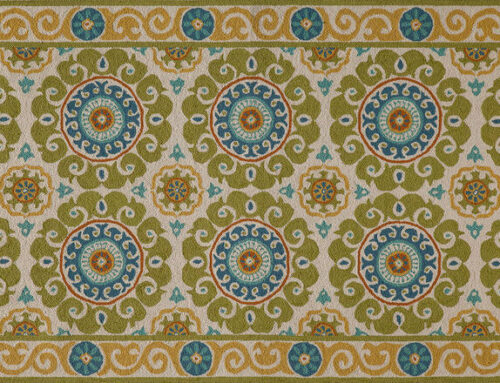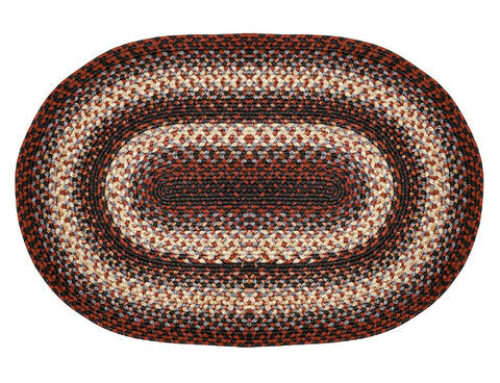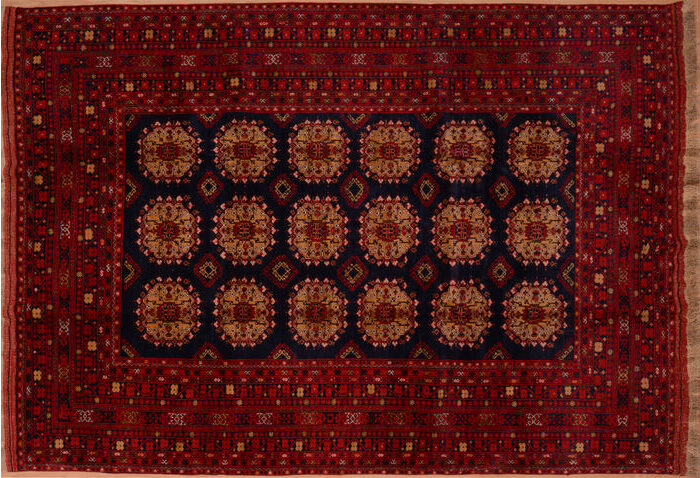
A trade term for certain Turkmen carpets of the Ersari tribe. These are main carpets, coarsely woven, with the gulli gul design and are about 8 feet by 10 feet. Also, a woven or knitted coverlet (general usage). A native of Afghanistan.
A country of Central Asia bordered by Iran, Turkmenistan, Uzbekistan, Tajikistan, China, and Pakistan. About 75 percent of the population is Sunni Muslim. Rugs are woven by native Afghans (Pashtun) and by Turkmen tribes, most of whom migrated to Afghanistan in the 1920s. These tribes include Ersari, Tekke, Yomud, and Sariq. There is some rug production from Baluchi and Uzbek peoples in Afghanistan. A wide variety of flatweaves is produced along with bags, animal trappings, and other special-function tribal weavings.
Rug export from Afghanistan increased in the 1970s with the large-scale production of lower-quality rugs. Soviet Russian troops occupied Afghanistan in December of 1979 in support of a communist régime. Armed resistance to the occupying forces and to the civil government involved much of the rural population. Soviet troops withdrew in February of 1989 and the communist régime was defeated in May of 1992. Warfare resumed in 2002 with the United States incursion into Afghanistan. Rug production, marketing, and distribution were disrupted by warfare. Most descriptions of rug production and marketing centers refer to conditions in prewar Afghanistan.
Characteristics of Afghan Rugs
-
Material and Knots
Afghanistan carpets that are single wefted and without offset warps may be termed yaktâr and those that are double wefted with offset warps may be termed dotâr.
-
Design and Pattern
Pile rug production consists largely of pieces with traditional Turkmen guls and geometric designs in shades of red.1
Collections
- Afghan Rugs | © Rugman
- Afghan Rugs | © Rugman
- Afghan Rugs | © Rugman

